The Heartwarming Magic of Tuscany’s Abbadia San Salvatore
8 min readSituated within the shade of Tuscany’s Monte Amiata, Abbadia San Salvatore offered my family a serene escape from the arteries of Florence and Rome. Here are my favorite things to do in Abbadia San Salvatore after spending several days in a quaint villa.
Like a lot of small historic towns and villages in the Italian countryside, life moves at a slower pace in Abbadia San Salvatore. This allows you to take a breath, savor the little things, and immerse yourself in this dreamy locale blessed with unique history and traditions.
Renting a car from Florence, the scenic drive to our villa near the town center was rife with rolling hills and picturesque vistas that Tuscany is known for. Upon our arrival, I was immediately struck by the tranquil ambiance of this Italian village, where you feel like time itself has taken a break – with a glass of Chianti.
Here’s a picture of our charming villa. We booked it through HomeExchange, where the villa’s owners stayed at our home in Minneapolis!
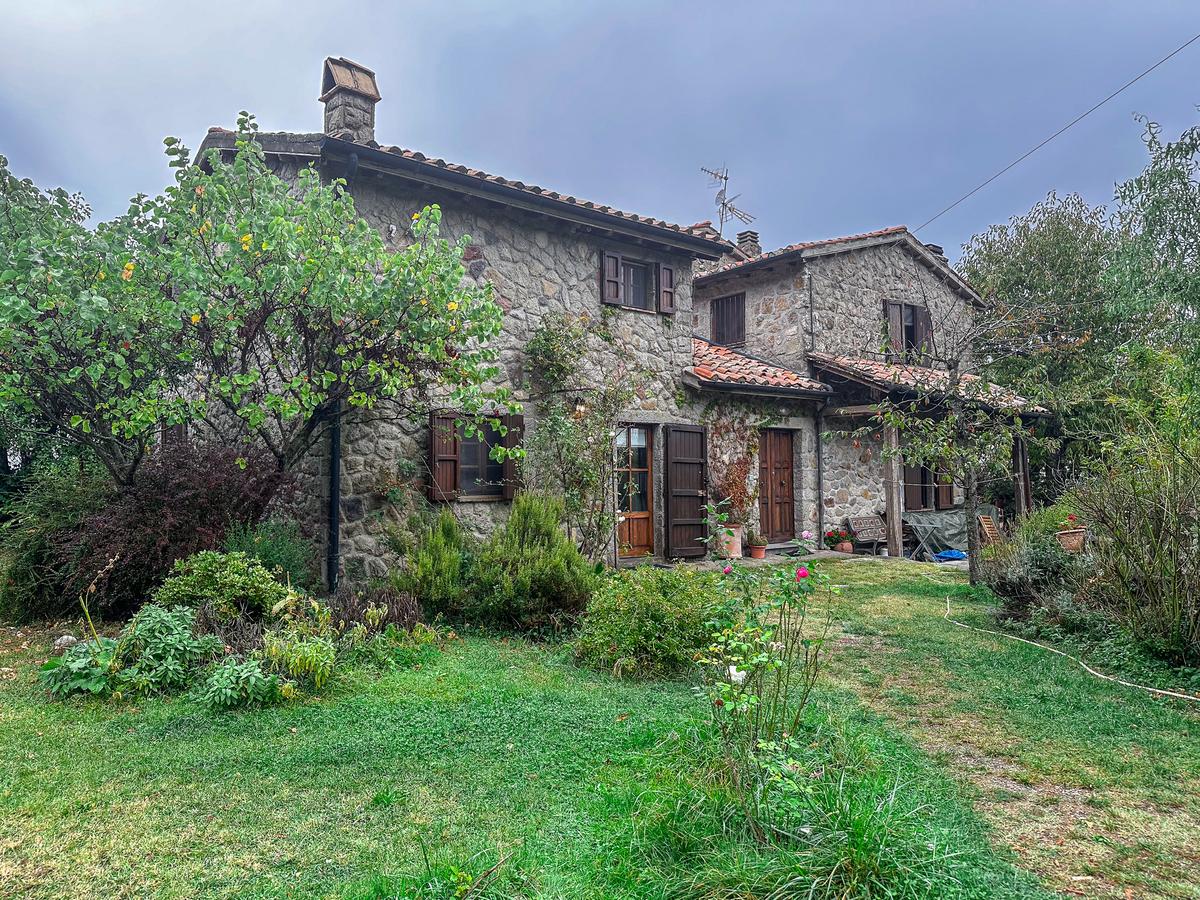
This was the main reason for our trip, and I loved it. It allowed us to explore a new area we wouldn’t have visited otherwise. There are similar quaint hotels and B&B-style accommodations available on Booking.com.
The heart of this town is the Abbey of San Salvatore, from which the village gets its name. This ancient, ruined abbey has been a focal feature of the commune for over 1000 years. It may be the heart, but the soul comes from the warm, tradition-steeped folks that we met while we were here during the village’s famous Torch Festival.
I’d highly recommend Abbadia San Salvatore to anyone visiting this part of Italy. It’s easy to reach from major hubs like Florence and Siena and a perfect slice of rural Italy for those seeking some peace and quiet. Check out this handy little guide based on our family trip and see for yourself!
What We Cover
TL;DR Things to Do in Abbadia San Salvatore
| No. | Activities | Average Duration |
|---|---|---|
| 1 | Visit the Abbey of San Salvatore | 2 hours |
| 2 | Explore the Mining Museum Park | 1.5 hours |
| 3 | Walk around Monte Amiata | 3 hours |
| 4 | Try local cuisine at a authentic restaurant | 1 hour |
| 5 | Attend the traditional Torchlight Festival | Evening event |
1. Tour The Abbey (Abbazia di San Salvatore)
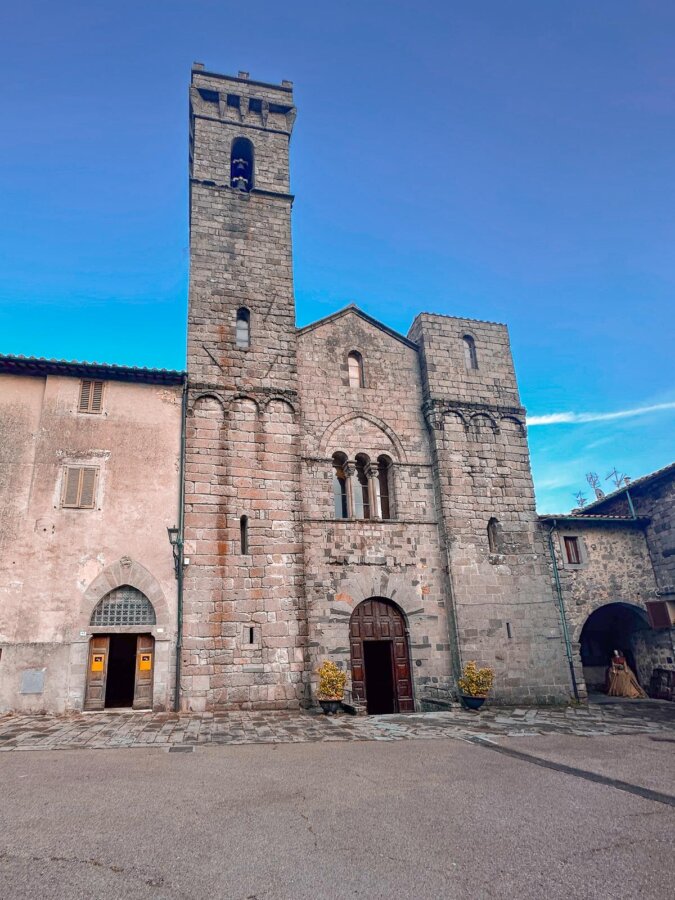
Address: Via del Monastero, 50, 53021 Abbadia San Salvatore SI, Italy
The ancient Abbey of San Salvatore was our first stop, and it should be yours too! Steeped in history, the abbey was founded during the early Middle Ages in the 8th century by the Lombard King Ratchis. Despite being a little weatherworn on the outside, it’s remarkably well preserved within and a textbook example of an early-medieval Italian church.
A refuge for Benedictine monks, before converting to a Cistercian monastery, the Abbey of San Salvatore carries a palpable sense of history in its ancient corridors and cloisters. Highlights for me were the main pulpit and the courtyard.
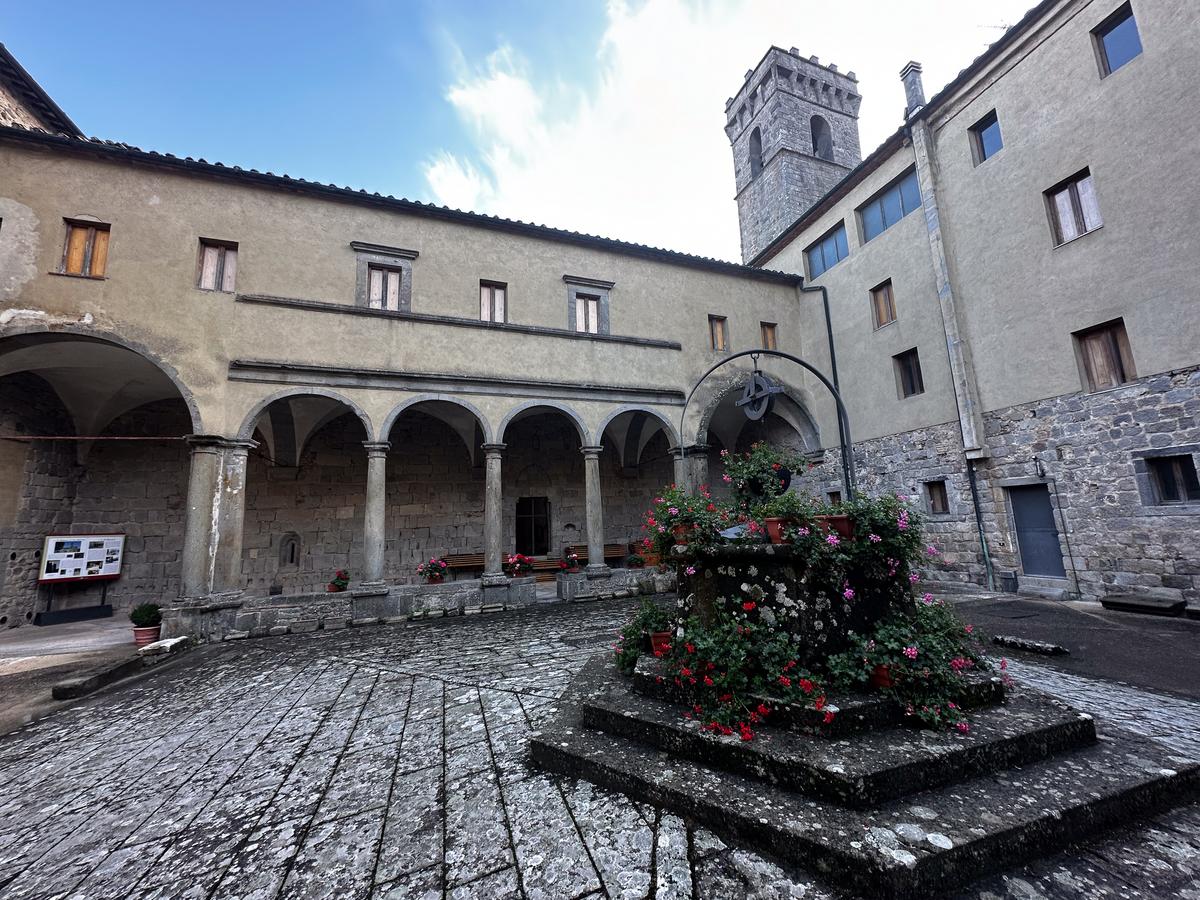
This old church is one of the most culturally significant in the region and Italy as a whole. In addition to being a clashing point between warring Tuscan houses in the medieval period, this place was once home to the Bibbia Amiatina (aka the Codex Amiatinus or the Jarrow Codex).
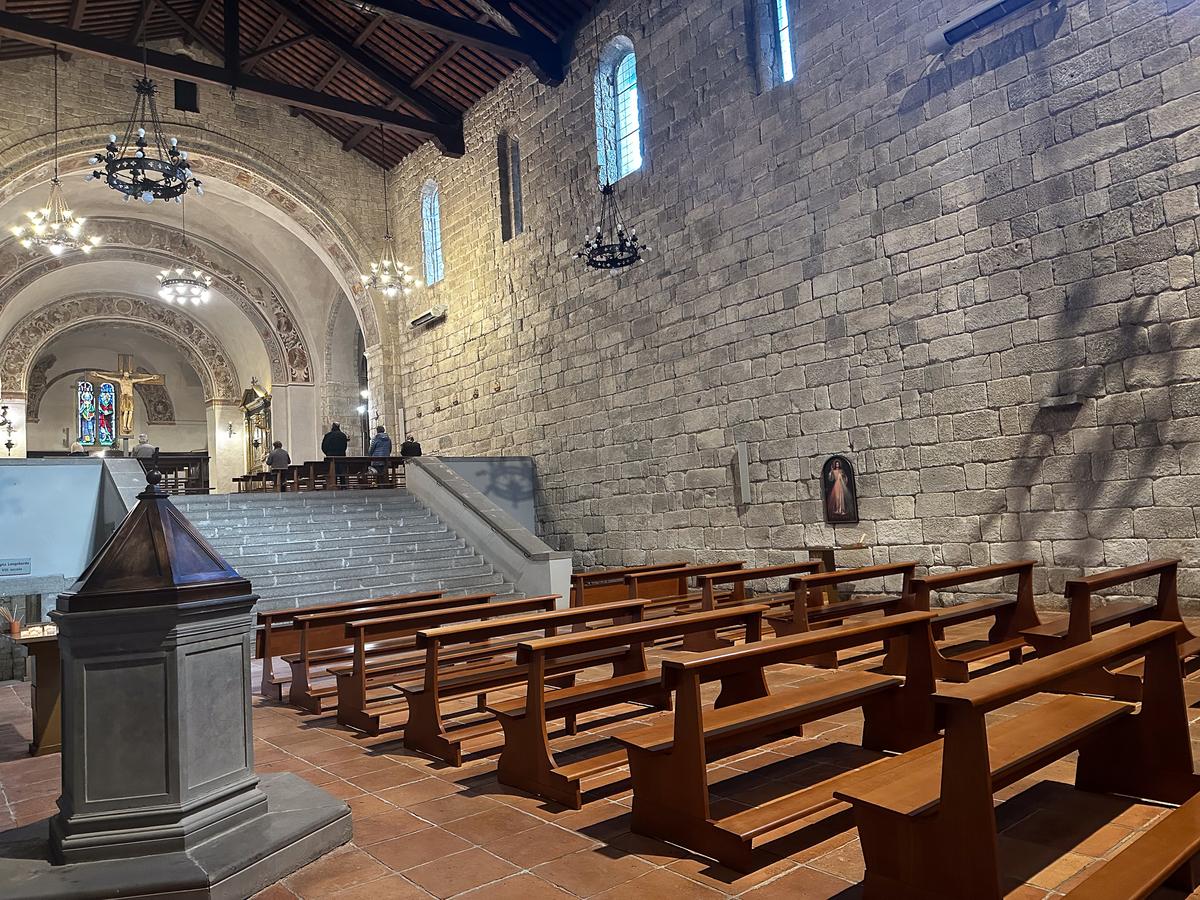
For those of you out of the know, the Codex Amiatinus is the best-preserved Latin Vulgate version of the Christian Bible in the world. Compiled around the year 700 in Northeast England, it was a gift for Pope Gregory II. It is the world’s oldest complete one-volume Latin Bible and was held at the Abbey from the 9th to the 18th centuries. This sacred text is now in the Laurentian Library in Florence.
2. Explore The Crypt
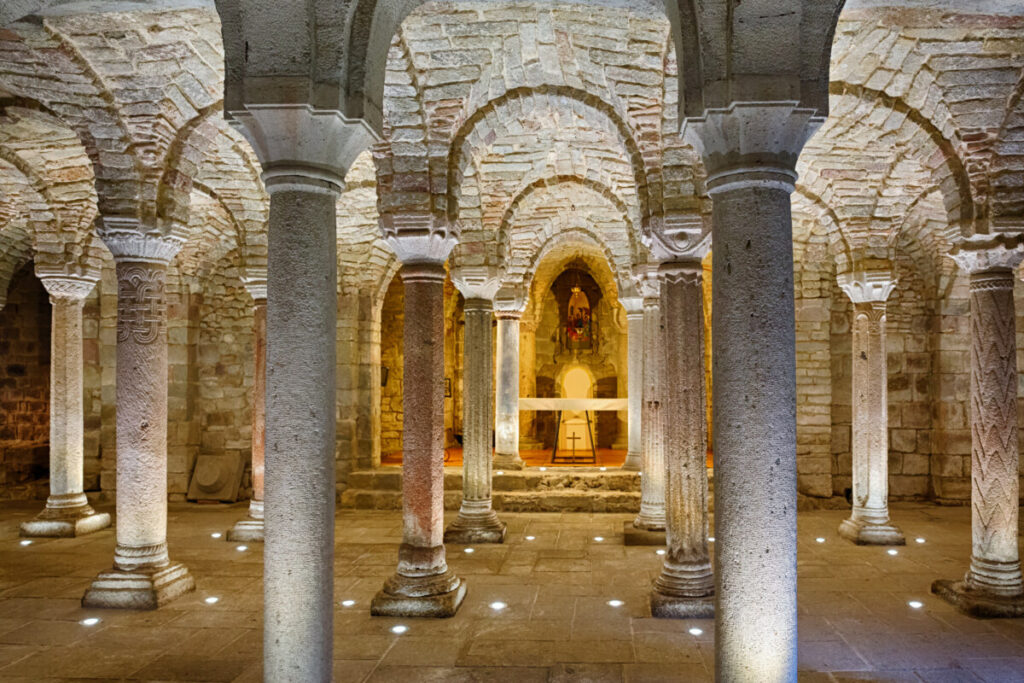
Address: Via del Monastero, 32, 53021 Abbadia San Salvatore SI, Italy
Beneath the Abbey lies an extraordinary crypt, that’s basically an attraction in its own right. Filled with densely packed columns resembling a white stone forest, the stonework of the walls is nothing short of fascinating. It blows my mind that this seemingly hodge-podge pile of rocks is still standing after over a millennium.
There’s also a mini museum down here and a few small exhibits too. It’s a great place to learn about the history of the abbey, as well as the history of the town, the region and the influence Catholicism has held over Italy.
3. Visit The Mining Park and Museum
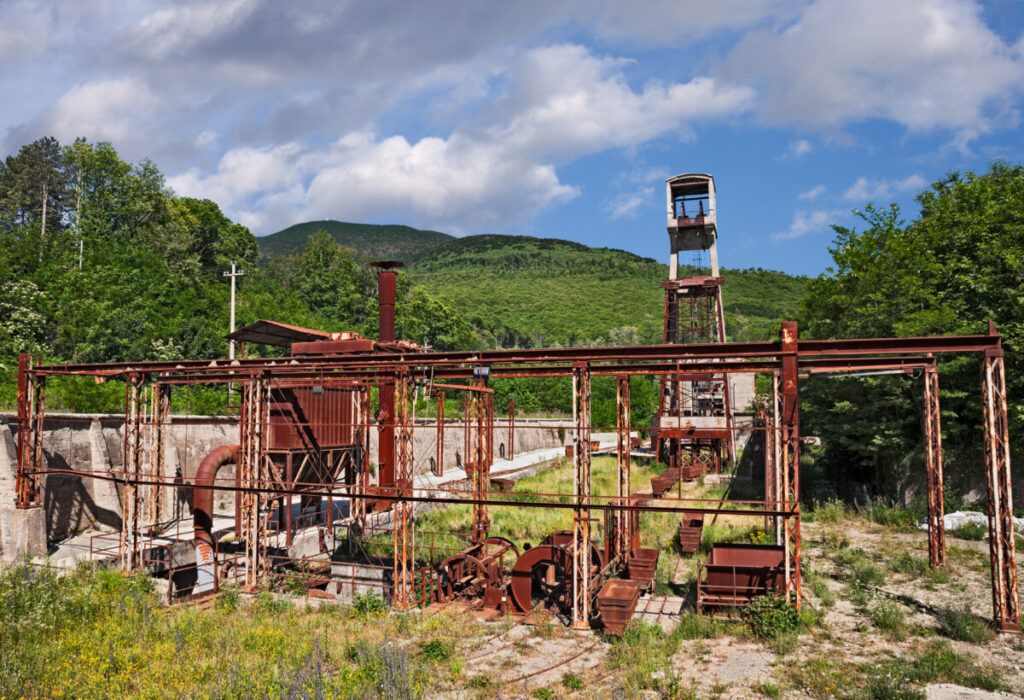
Address: Via Suor Gemma, n. 1, 53021 Abbadia San Salvatore SI, Italy
Fancy lingering underground a little while longer? Dive deeper into the region’s history at the Mining Park and Museum. This fantastic museum showcases the area’s historic mercury mining industry, in an old mercury mine that extracted this valuable, toxic liquid metal from 1899 to 1972.
It’s easy to spend a whole day here – the park alone is great for a stroll on a sunny day. The Mining Park and Museum is technically three museums rolled into one, concerning different aspects and eras of the local mining industry, once the area’s livelihood.
Among the exhibits housed in the iconic Clock Tower, you’ll find a collection of tools, hard hats, historic photographs, and garments that tell a story of life in the mines. You can also listen to audio recordings, watch video presentations, and attend fun workshops that bring you closer to the miners’ experiences. You’ll gain insight into their hard work, sense of brotherhood, and their fight for workers’ rights.
My daughter couldn’t get enough of this place (we’re both huge fans of NEMO – I shouldn’t be surprised). It’s not the only mining museum I’ve been to, and it’s not like any of them either. This was a genuinely enlightening attraction and the last thing I’d have expected to find in Tuscany.
4. Local Events And Traditions
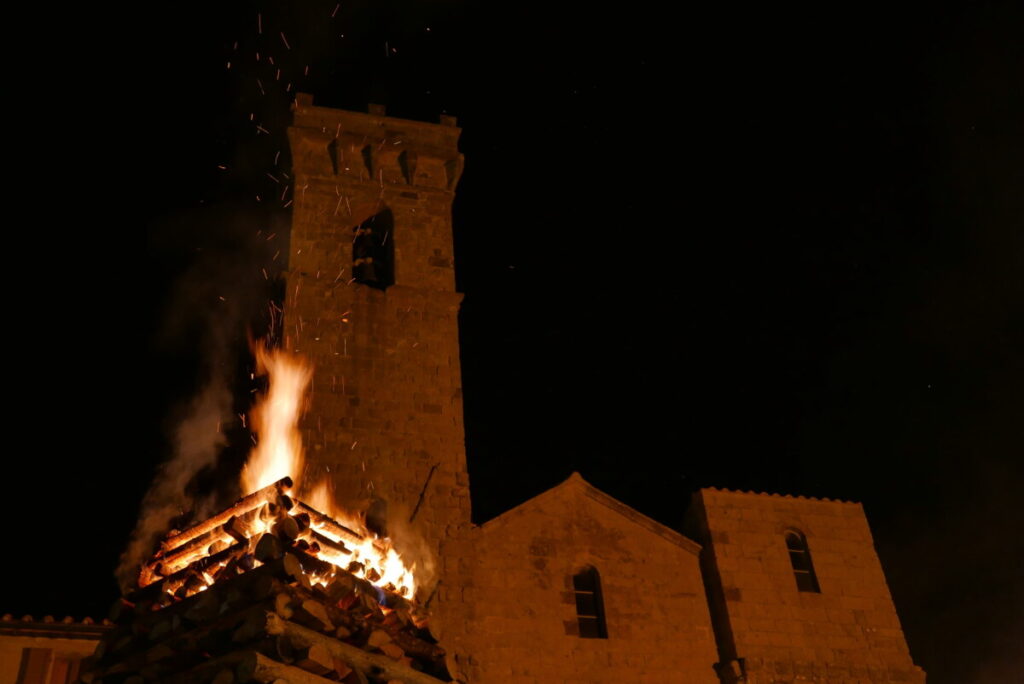
To truly feel the pulse of this historic town, immerse yourself in its local traditions and events. During our stay, we got to witness two of them!
The first was the weekly market, held in the center of town. It’s your typical country farmers market, with fresh produce, street eats and local crafts and handiwork.
Being December there were a lot more festive decorations and trinkets for sale. Not to mention bigger crowds.
The main event, however was the Torch Festival (or Fiaccole di Natale) which lasts most of December, reaching its climax on Christmas Eve. This medieval festival sees the entire town filled with flaming torches and pyres, lighting (and warming) the small town during the holiday season.
The height of the festival arrives on December 24th. The square in front of the abbey is ringed with more flaming torches, with one enormous pyre taking center stage. We weren’t in town to see that big boy burn up, but still, it was a great experience watching the wonder and spark in my daughter’s eyes.
5. Take A Day Trip To Bagni San Filippo Hot Springs
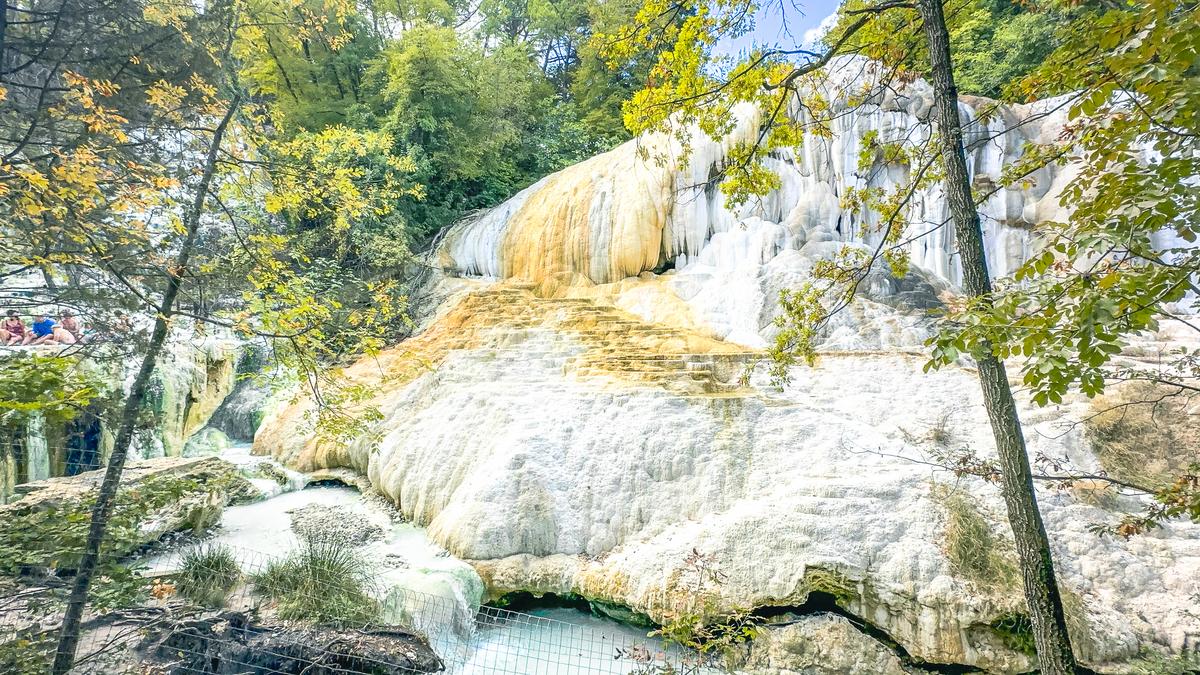
The next day, we took a 15-minute drive from Abbadia San Salvatore to explore the Bagni San Filippo hot springs. These thermal waters offer a natural spa experience and are free to bathe.
With car keys in hand, we took another scenic journey through the Tuscan countryside. The Fosso Bianco, a majestic outdoor oasis, led us to the grand spectacle of the Balena Bianca, a massive calcium formation shaped over centuries. It looks like something from outer space!
Bagni San Filippo might be small, but it’s rich in rustic eateries, complementing a day of geothermal wonder. Check the weather forecast for the springs’ sulfur content, and be kind to the delicate Balena Bianca by not walking all over it!
Read More: Where to Stay in Tuscany
7. Hike To The Top Of Monte Amiata
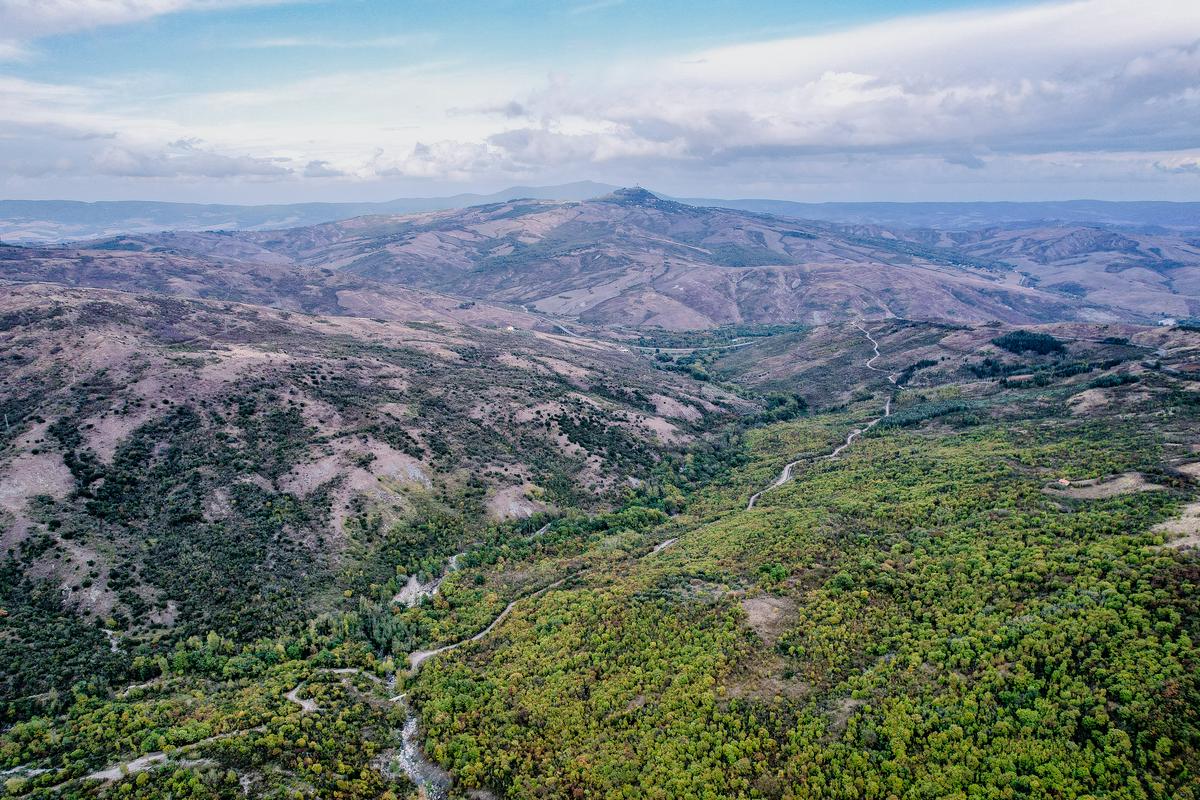
On our last day, we decided to go for a hike up Monte Amiata. The trek from Abbadia San Salvatore to this extinct volcano was a real treat, unveiling expansive views and natural splendor every step of the way. Here are the details:
- Start Point: Town center of Abbadia San Salvatore
- Trail Length: Approximately 10 km round trip
- Mid Point: Summit of Monte Amiata at 1,738 meters
- Duration: Expect 4 to 5 hours, depending on your pace
- End Point: Abbadia San Salvatore
Moderate fitness levels are recommended. The ascent reveals a tapestry of beech and fir trees, with panoramic vistas at the summit—a perfect backdrop for a family photo!
On the way back down to Abbadia San Salvatore, the mountain’s personality shifts, offering new perspectives and a serene end to your day’s adventure. The hike promises an unforgettable experience, marked by the tranquil beauty of Tuscany’s elevated landscapes.
See Related: An Itinerary for Spending 7-10 Days in Italy
8. Dine Well at Local Tuscan Restaurants
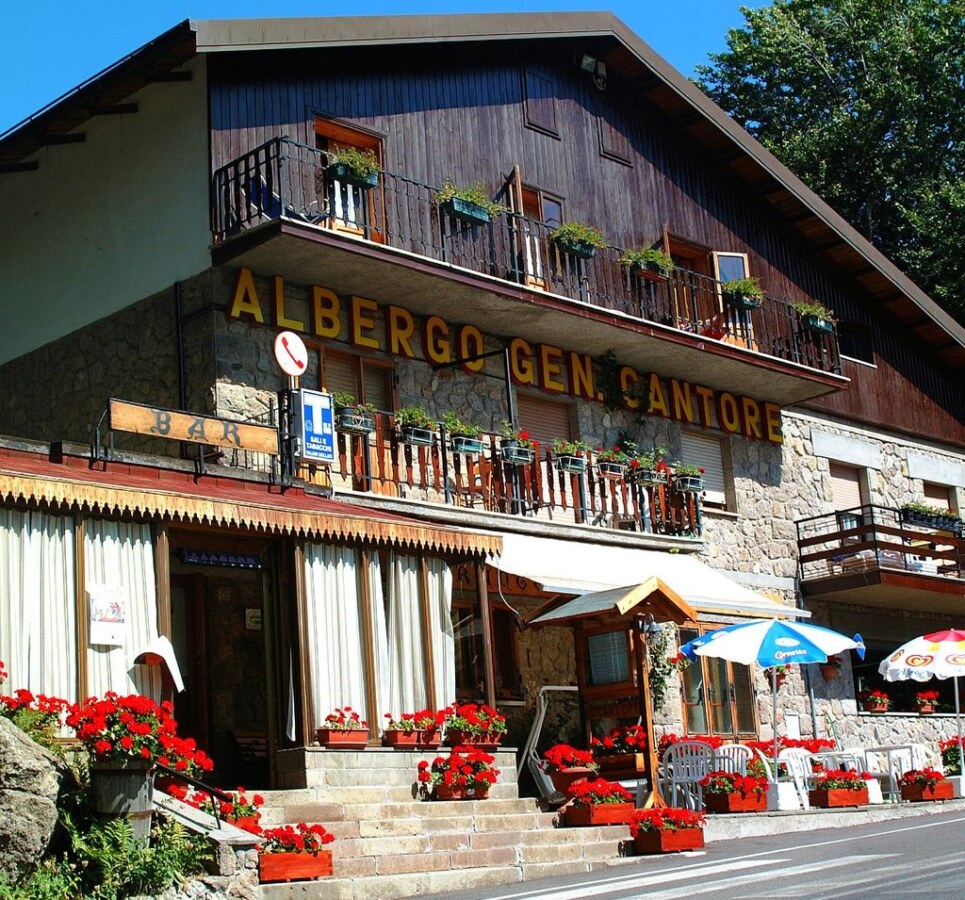
What’s a Tuscan vacation without sampling a little local fare? The charm of Abbadia San Salvatore extends to its culinary offerings.
There are tons of terrific local eateries to enjoy here, most of them using fresh local ingredients and produce. During my family’s vacation, we delved into traditional Italian dining, where each meal seemed to outshine the last.
Lunch breaks were moments of reverence, and the dinner we wolfed down after climbing Monte Amiata was one to remember. This town is home to some of the best homemade cooking I’ve ever tasted anywhere in the world. Highlights were:
- Pasta: An Italian staple, but each sauce and shape told my tastebuds a different story – and nothing beats fresh pasta.
- Wine: Tuscany’s vines are legendary and the Chianti game here is top-tier. A glass of local wine is a must to complement your meal.
- Dessert: From tiramisu to panna cotta, the sweetness of Italy was perfected in every dessert I had in Abbadia.
I recall an unforgettable experience at a cozy spot where the aroma of fresh ingredients from the Via Francigena, once traversed by pilgrims, now served as a guide for our appetites. Each dish was a testament to the rich tapestry of Italian, specifically Tuscan cuisine.
What is Abbadia San Salvatore Known For?
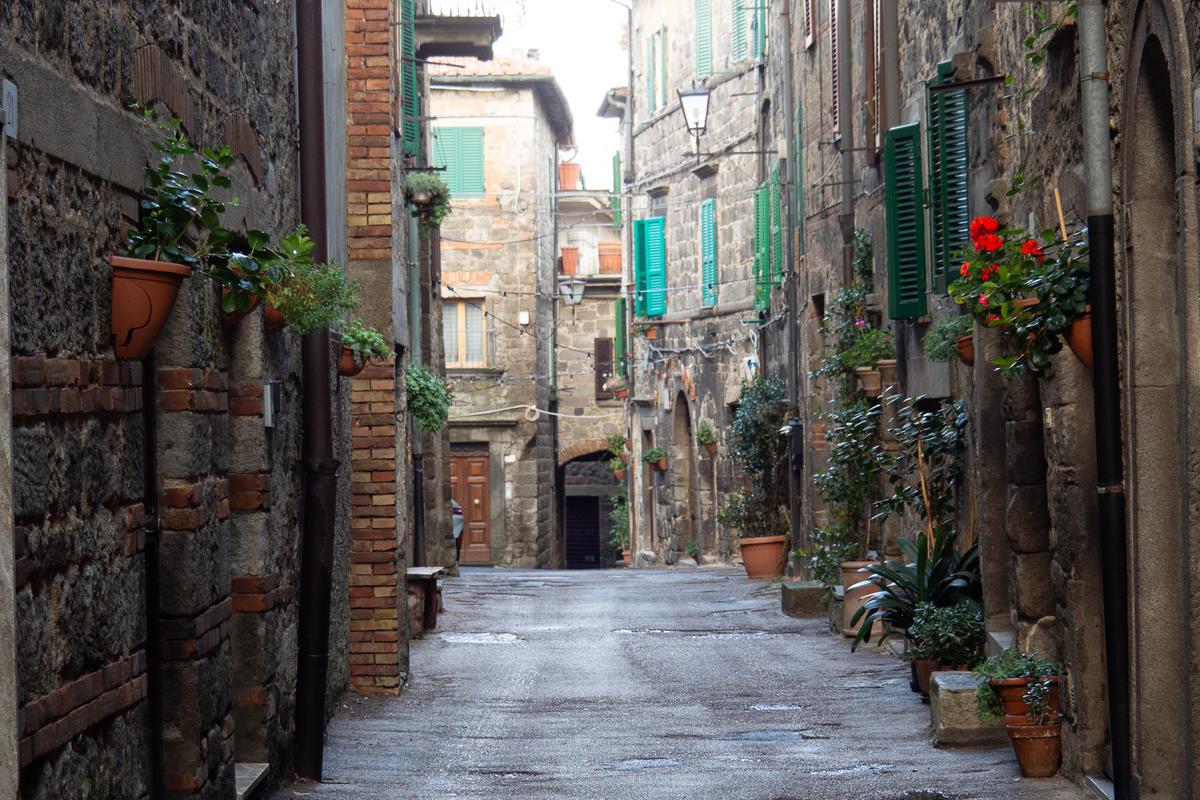
Abbadia San Salvatore holds the honor of being one of the most distinctive monastic settlements in Tuscany. Its enthralling history, intertwined with the revered Benedictine Abbey of San Salvatore, trails back to the 8th century. This age-old stronghold wasn’t merely an architectural masterpiece but a strategic vanguard controlling the Via Francigena, an ancient road and pilgrimage route.
As centuries passed, the 12th and 13th centuries marked a significant evolution. Following an upsurge in growth, a second set of city walls was sculpted, signifying the rise of the Castelli. Even today, one can witness the timeless charisma of its striped walls, standing tall as a testament to its enduring legacy.
Evolving still, the village stepped into its third and defining stage. A new entity, the “Borgo,” came into existence.
The final ring of city walls, distinct from its predecessors, was etched into the landscape. This phase cultivated Abbadia San Salvatore’s final symphony in the 13th century.
In this articulate weave of history, the village evolved through three significant stages spanning the 8th to 14th centuries. Each stage etched a new stroke on its canvas, gradually enhancing its allure.
Tuscany Travel Itinerary [Video]
Related Guides



